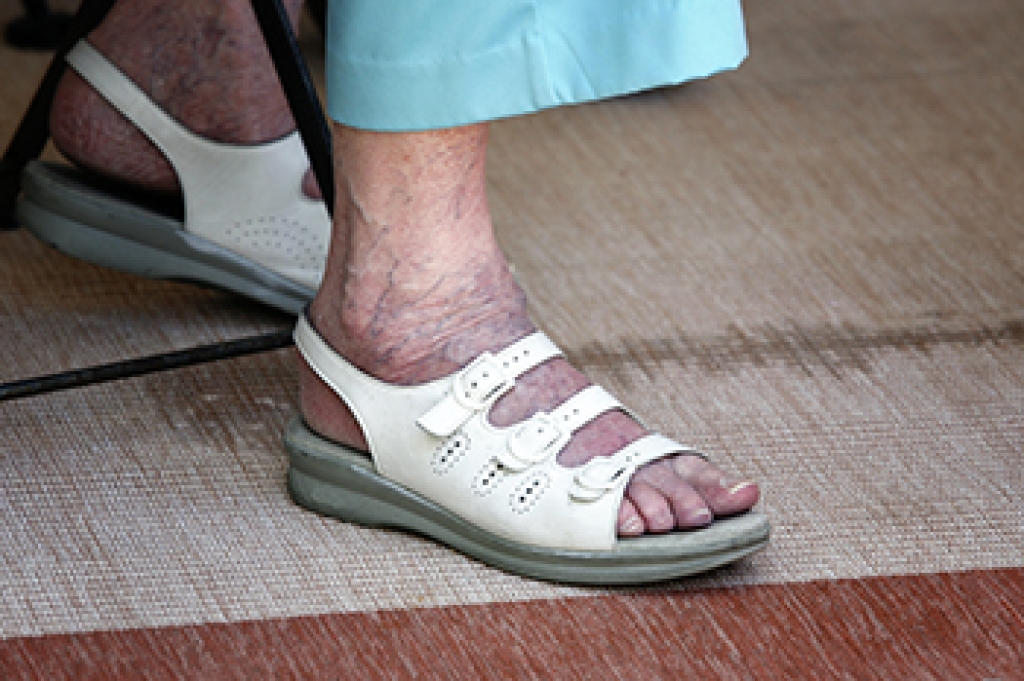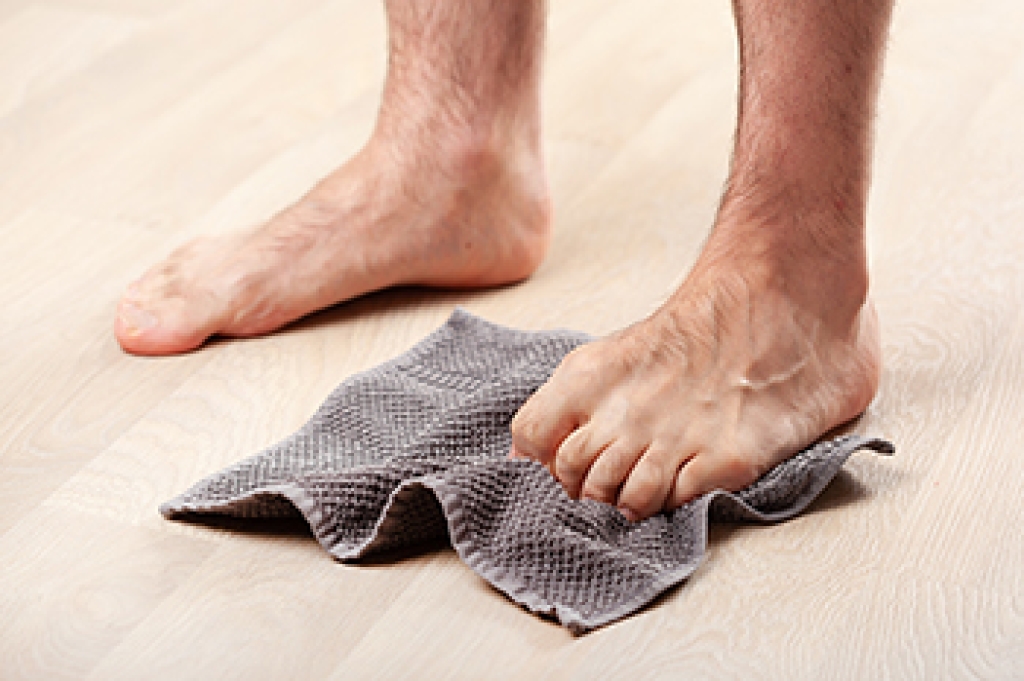Blog
Preventing Foot Problems in Elderly People

As people age, maintaining balance and mobility becomes more difficult, increasing the risk of falls. Decreased muscle strength, joint stiffness, vision changes, and reduced nerve sensitivity can all lead to instability. Foot pain, bunions, hammertoes, and poorly fitting shoes may further affect balance and gait. Some medications and circulation problems can also cause dizziness or weakness. Regular foot care is essential for stability and comfort. A podiatrist can assess foot health, gait, correct biomechanical issues, and recommend custom orthotics or supportive footwear. It is suggested that older adults who notice changes in balance or foot comfort schedule a podiatric exam to prevent falls and stay active safely.
If you need your feet checked, contact one of our podiatrists of Pocono Foot & Ankle Consultants. our doctors will attend to all of your foot and ankle needs and provide you with quality treatment.
Geriatrics and Podiatry
When people age, some common issues that may occur are bone density loss, dry skin, poor circulation, and rough brittle nails. These issues may also affect your foot health if the necessary steps are not taken to alleviate the problems.
It is important to take care of your feet because feet that are injured or diseased can affect your overall health. Having painful feet hinders your ability to do daily activities or may decrease your willingness to do the things that you need to do.
Visiting Your Geriatrician
As we age, health problems become more likely, so it is essential to visit your doctor for check-ups to ensure that you are doing the best you can to take care of your health. It is recommended to check your feet frequently for any possible cuts, bruises, swelling, corns or any other irregularities.
Taking Care of Elderly Feet
Cracked or dry feet can be treated by applying moisturizer often. It is also important not to wear old socks because the older the sock is, the higher the possibility there will be that there is bacteria there. Wear fresh socks and make sure they fit properly.
Proper foot health means that you can have a more active lifestyle and you will not be bogged down by pain. Foot health also leads to good circulation, which is paramount for overall health.
If you have any questions, please feel free to contact our offices located in Stroudsburg, Nazareth, and Easton, PA . We offer the newest diagnostic and treatment technologies for all your foot care needs.
Foot Exercises to Relieve Plantar Fasciitis Pain

Plantar fasciitis is inflammation of the thick band of tissue that supports the arch of the foot, often causing heel pain. Gentle stretching and strengthening exercises can reduce discomfort and promote healing. A calf stretch is done by standing facing a wall, placing one foot behind the other, and leaning forward to stretch the back calf. A calf stretch on a step involves lowering your heels off the edge of a step to lengthen the calf muscles. Additionally, the towel scrunch strengthens the arch by pulling a towel toward you with your toes, and marble pick-ups train foot control by lifting marbles with your toes. Plantar fasciitis can be painful, and may cause difficulty in completing daily tasks. If you have heel pain,, it is suggested that you consult a podiatrist who can diagnose the problem and offer you relief and treatment solutions, which may include targeted exercises.
Exercising your feet regularly with the proper foot wear is a great way to prevent injuries and build strength. If you have any concerns about your feet, contact one of our podiatrists from Pocono Foot & Ankle Consultants. our doctors can provide the care you need to keep you pain-free and on your feet.
Exercise for Your Feet
Exercise for your feet can help you gain strength, mobility and flexibility in your feet. They say that strengthening your feet can be just as rewarding as strengthening another part of the body. Your feet are very important, and we often forget about them in our daily tasks. But it is because of our feet that are we able to get going and do what we need to. For those of us fortunate enough to not have any foot problems, it is an important gesture to take care of them to ensure good health in the long run.
Some foot health exercises can include ankle pumps, tip-toeing, toe rises, lifting off the floor doing reps and sets, and flexing the toes. It is best to speak with our doctors to determine an appropriate regimen for your needs. Everyone’s needs and bodies are different, and the activities required to maintain strength in the feet vary from individual to individual.
Once you get into a routine of doing regular exercise, you may notice a difference in your feet and how strong they may become.
If you have any questions, please feel free to contact our offices located in Stroudsburg, Nazareth, and Easton, PA . We offer the newest diagnostic and treatment technologies for all your foot care needs.
Managing Thick Toenails Caused by Fungal Infections

Toenail fungus is a common condition that often leads to thick, discolored, and brittle nails that can become difficult to trim and uncomfortable in shoes. It is usually caused by fungi that thrive in warm and moist environments such as communal showers or sweaty footwear. These infections may make the nail look yellow, chalky, or crumbly, and some nails may lift from the nail bed or develop an unpleasant odor. Thick toenails can feel tender, tight, or pressured, especially when wearing shoes. A podiatrist can begin by evaluating the nail to confirm the presence of fungus and rule out other conditions such as psoriasis or trauma. Treatment may include debridement to reduce thickness, topical or oral antifungal medications, and guidance on prevention and hygiene. If you notice persistent changes in your toenails, it is suggested that you make an appointment with a podiatrist.
For more information about treatment, contact one of our podiatrists of Pocono Foot & Ankle Consultants. our doctors can provide the care you need to keep you pain-free and on your feet.
Toenail Fungus Treatment
Toenail fungus is a condition that affects many people and can be especially hard to get rid of. Fortunately, there are several methods to go about treating and avoiding it.
Antifungals & Deterrence
Oral antifungal medicine has been shown to be effective in many cases. It is important to consult with a podiatrist to determine the proper regiment for you, or potentially explore other options.
Applying foot powder on the feet and shoes helps keep the feet free of moisture and sweat.
Sandals or open toed shoes – Wearing these will allow air movement and help keep feet dry. They also expose your feet to light, which fungus cannot tolerate. Socks with moisture wicking material also help as well.
If you have any questions please contact our offices located in Stroudsburg, Nazareth, and Easton, PA . We offer the newest diagnostic and treatment technologies for all your foot and ankle needs.
Morton’s Neuroma and Surgical Treatment Options

Morton’s neuroma is a painful condition caused by thickening of tissue surrounding a nerve between the third and fourth toes, often resulting in burning, tingling, or numbness. When conservative treatments are ineffective, surgery may be recommended. A neurectomy involves removing the affected nerve to relieve pain, while decompression surgery releases pressure on the nerve by cutting surrounding ligaments. Recovery time varies depending on the procedure, typically requiring several weeks to regain full function and return to normal activities. A podiatrist can evaluate the severity of the neuroma, discuss surgical and non-surgical options, and provide post-operative care to ensure proper healing. If you have pain in this part of your foot, it is suggested that you consult a podiatrist who can accurately diagnose Morton’s neuroma, and discuss surgical options with you.
Foot surgery is sometimes necessary to treat a foot ailment. To learn more, contact one of our podiatrists of Pocono Foot & Ankle Consultants. our doctors will assist you with all of your foot and ankle needs.
When Is Surgery Necessary?
Foot and ankle surgery is generally reserved for cases in which less invasive, conservative procedures have failed to alleviate the problem. Some of the cases in which surgery may be necessary include:
- Removing foot deformities like bunions and bone spurs
- Severe arthritis that has caused bone issues
- Cosmetic reconstruction
What Types of Surgery Are There?
The type of surgery you receive will depend on the nature of the problem you have. Some of the possible surgeries include:
- Bunionectomy for painful bunions
- Surgical fusion for realignment of bones
- Neuropathy decompression surgery to treat nerve damage
Benefits of Surgery
Although surgery is usually a last resort, it can provide more complete pain relief compared to non-surgical methods and may allow you to finally resume full activity.
Surgical techniques have also become increasingly sophisticated. Techniques like endoscopic surgery allow for smaller incisions and faster recovery times.
If you have any questions, please feel free to contact our offices located in Stroudsburg, Nazareth, and Easton, PA . We offer the newest diagnostic and treatment technologies for all your foot care needs.

